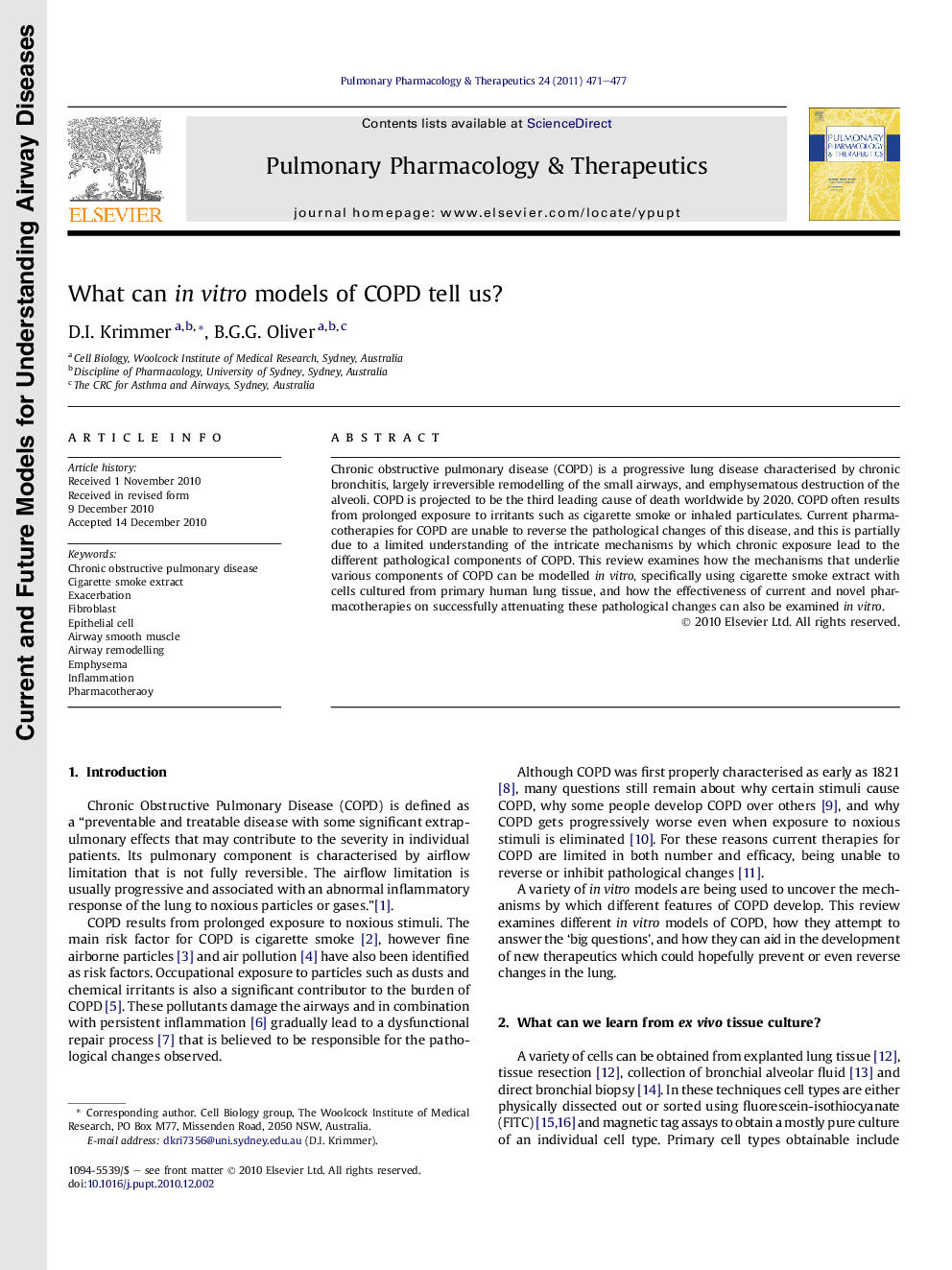| کد مقاله | کد نشریه | سال انتشار | مقاله انگلیسی | نسخه تمام متن |
|---|---|---|---|---|
| 2567353 | 1128327 | 2011 | 7 صفحه PDF | دانلود رایگان |

Chronic obstructive pulmonary disease (COPD) is a progressive lung disease characterised by chronic bronchitis, largely irreversible remodelling of the small airways, and emphysematous destruction of the alveoli. COPD is projected to be the third leading cause of death worldwide by 2020. COPD often results from prolonged exposure to irritants such as cigarette smoke or inhaled particulates. Current pharmacotherapies for COPD are unable to reverse the pathological changes of this disease, and this is partially due to a limited understanding of the intricate mechanisms by which chronic exposure lead to the different pathological components of COPD. This review examines how the mechanisms that underlie various components of COPD can be modelled in vitro, specifically using cigarette smoke extract with cells cultured from primary human lung tissue, and how the effectiveness of current and novel pharmacotherapies on successfully attenuating these pathological changes can also be examined in vitro.
Journal: Pulmonary Pharmacology & Therapeutics - Volume 24, Issue 5, October 2011, Pages 471–477